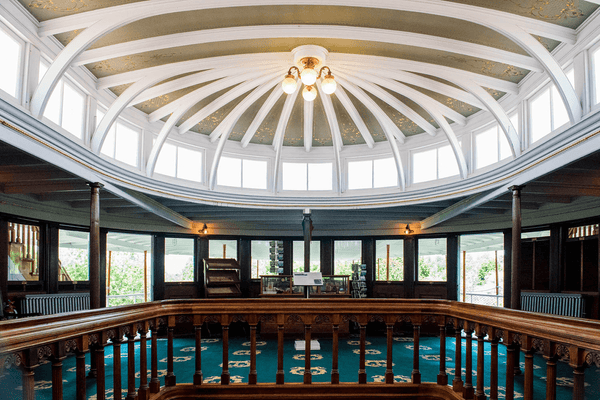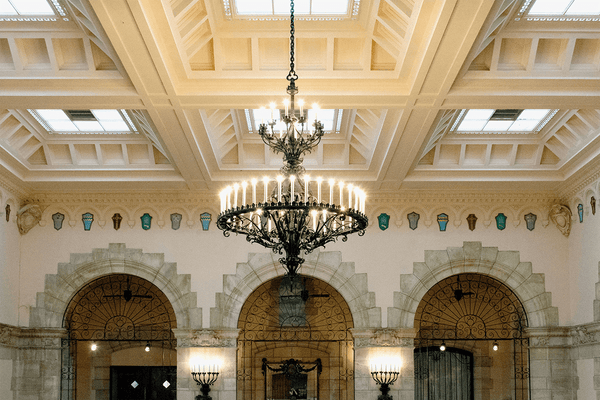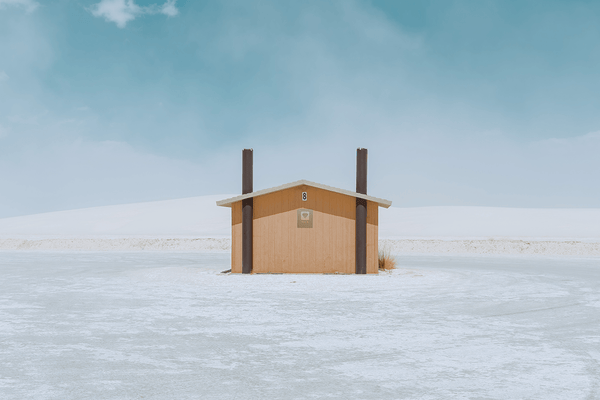VISITING BOURBON STREET
NEW ORLEANS
As the sun goes down, neon illuminates the entire street, and loud music seems to spill out from every door. With bead decorations everywhere and people carrying their "go-cups" filled with sweet bourbon-themed libations there's no mistaking you've arrived at the historic Bourbon Street...

Bourbon Street is a famous street in New Orleans' French Quarter. Its party atmosphere, annual Mardi Gras events, and many bars and clubs are world-renowned. Visitors wanting more than a night of partying will find plenty of souvenir shops, local eats, and live music venues.
History of Bourbon Street
Records indicate Bourbon Street dates back to 1718, when Jean-Baptiste Le Moyne de Bienville founded New Orleans. The name comes from French engineer Adrien de Pauger, who subsequently designed New Orleans' streets in 1721. He chose one street to name after the ruling French family of Henry IV, which was Bourbon. He named other streets after Catholic saints and French royal houses.
The French ceded New Orleans to the Spanish in 1763, following the Seven Years' War. Twenty-five years later, most of New Orleans' structures sustained damage in the Great New Orleans Fire of 1788. Because the Spanish led reconstruction efforts, you're likely to spot more Spanish than French influences in the existing architecture.
The French regained control briefly, but the Louisiana Purchase soon followed, granting the city to America. Street names were translated to English, which is why Rue Bourbon became Bourbon Street.
Bourbon Street has had a tumultuous and seedy past, even in recent years. However, it's also the site of important historical structures and events, including:
- Galatoire's Restaurant.
- The birth of the "go cup."
- Cafe Lafitte In Exile, one of the country's oldest gay bars.
- The creation of the famous cocktail Absinthe House Frappe.
Geography of Bourbon Street
This diagonal-running street might seem confusing when you look at it on a map. It stretches 13 blocks between Canal Street and Esplanade Avenue, running parallel to the Mississippi River. The northern end near Esplanade is Lower Bourbon, while the southern part near Canal Street is Upper Bourbon.
Understanding Bourbon Street's layout is essential, as each area offers something different for everyone. You can find most of the nightlife, complete with neon lights and giant drinks served in to-go cups, on Upper Bourbon, closer to Canal Street. Lower Bourbon is slightly more subdued than Upper Bourbon and boasts a lively LGBTQIA community.
What to Do on Bourbon Street
When it comes to party destinations in New Orleans, Bourbon Street is hard to beat. There's always something going on, including world-famous events like Mardi Gras. You won't be alone if you're looking for somewhere to host a bachelor or bachelorette party. Groups looking to celebrate upcoming weddings, birthdays, and other special occasions flock here year-round.
Music lovers will appreciate the wide range of rhythmic sounds emanating from many local bars and music venues, including jazz, blues, Dixieland, country, and more. Given the street's popularity, it should be no surprise that area is often crowded.
Evolution of the Go-Cup
During the 1960s, Bourbon Street earned itself a reputation for having seedy and rundown bars. With fewer patrons frequenting these businesses, owners got creative. Because drinking in public was legal in New Orleans, bars owners sold passersby alcohol in plastic cups through tiny windows. Called window-hawking, proprietors relied on unused doorways, carriageways, and these windows to sell drinks, snacks, beer, and more to the pedestrians walking down the infamous street.
Points of Interest on Bourbon Street
There's no shortage of famous spots on Bourbon Street, and the stunning architecture adds to the French Quarter's charm. The balconies are renowned and provide the perfect place for people-watching. Here are a few of the most notable spots to check out on your visit to the area:
- Galatoire's Restaurant: Galatoire's opened its doors at 209 Bourbon Street in 1905, making it one of the oldest surviving restaurants in New Orleans. The menu includes old-school Creole dishes, but many people come for the atmosphere as much as the cuisine. Note: Galatoire's has a dress code.
- Old Absinthe House: This historic building is located at 240 Bourbon Street and dates back to 1806. It started as a family-owned importing firm, but the ground floor later became a saloon. This bar is where mixologist Cayetano Ferrer created the Absinthe House Frappe in 1874.
- The Royal Sonesta Hotel: This hotel at 300 Bourbon Street opened in 1969, but the land dates back to New Orleans' early days. It once had stables, homes, and even a brewery.
- Bourbon 'O' Bar: When you need respite from the chaos and sugary drinks, head to Bourbon 'O' Bar inside the Bourbon Orleans Hotel. This bar is the spot for upscale and classic cocktails, including the famous Ramos Gin Fizz with a six-minute shake.
- Fritzel's Jazz Club: If you want old-fashioned jazz, head to Fritzel's European Jazz Club at 733 Bourbon Street. The building dates back to 1831 and hosts jazz performances every weeknight.
- Cafe Lafitte in Exile: Located at 901 Bourbon Street in the heart of the LGBTQIA area, Cafe Lafitte in Exile is the self-proclaimed oldest gay bar in the country. It's open 24/7 and has a cool wraparound bar and balcony.
- Lafitte's Blacksmith Shop: A few doors down at 941 Bourbon Street, you'll find Lafitte's Blacksmith Shop. It is potentially one of the oldest surviving structures in New Orleans and the oldest known bar in the U.S. Its famous mysteries and legends include stories of illegal dealings and hidden pirates, and some believe the ghost of founder Jean Lafitte haunts the building.
Are you looking for a place to enjoy a bourbon on Bourbon Street? You can find whiskey and bourbon at many of the bars here, but one of the more famous spots is Dickie Brennan's Bourbon House, the home of the New Orleans Bourbon Society. The Bourbon House is the place to drink, eat, and talk bourbon in the French Quarter. It offers a selection of almost 100 bourbons and sometimes hosts bourbon-paired food events.






